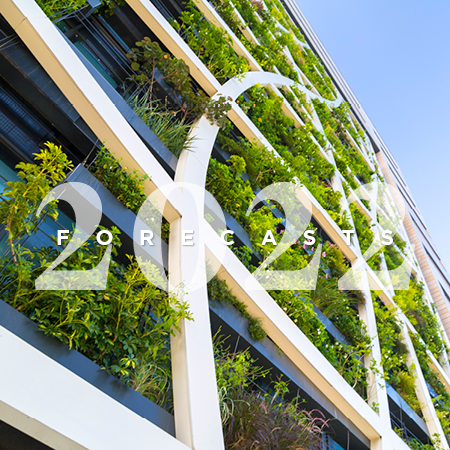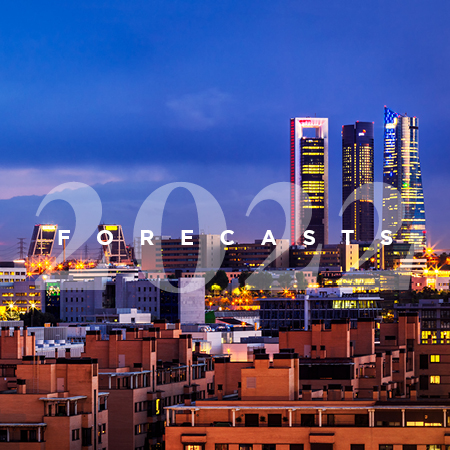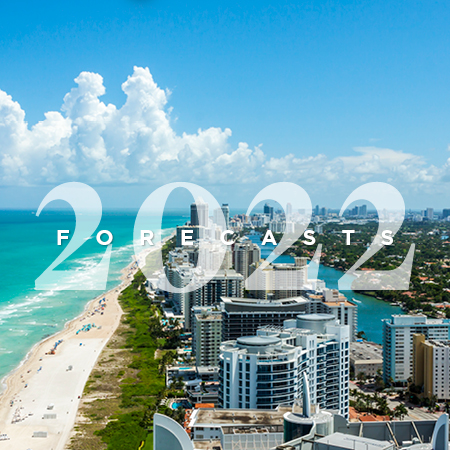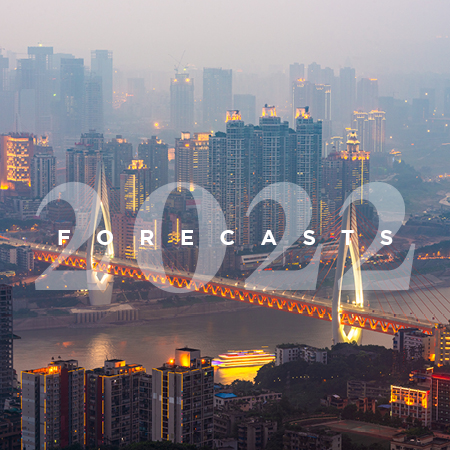Almost all of the world cities we monitor are expected to experience price increases for prime residential property in 2022. Twenty eight out of 30 will benefit from momentum set in motion following the first waves of the pandemic.
That momentum is set to continue this year, albeit at a more moderate pace now the initial bounce back is behind us. Across 30 world cities, the expected average prime capital value growth of 4.3% that is forecast for 2022 is lower than 2021, but still the second highest in five years.
The reasons behind these value increases are as they were in 2021: low stock levels in some locations, the desire for more space and a general emphasis on the home that has been necessitated by long-term hybrid working. Meanwhile, interest rates, while rising in many countries, remain low by historic standards so mortgages are still relatively affordable.
There is, however, a divergence in the prospects of cities. Those that rely on international demand, in particular, will find their prime residential outlook tied closely to the openness of their borders. Market cooling measures, which are especially prevalent in Asia, will be another mitigating factor in the year ahead.
US cities to outperform
Miami, where growth of 10% is anticipated in 2022, is the best performing US city that Savills monitors, and builds on the 21% growth recorded in 2021. Florida’s low-taxes, Miami’s competitive prices (by global standards), and the appeal of coastal living will support further growth.
Meanwhile, prices stabilised in New York in 2021, but it is expected to experience prime price growth of between 4% and 5.9% in 2022. This will be driven by residents returning to the city and rising domestic wealth.
Berlin to lead in Europe
Berlin is forecast to the be the standout among the European cities we monitor. Prime residential
prices, still relatively low by global city standards, are expected to grow by at least 10% in 2022.
New, prime developments are bringing quality stock to the market, supported by strong domestic
and international purchaser demand.
In Moscow, prime property is viewed as a safe haven asset in uncertain times, and that drove last year’s record growth. This trend will continue in 2022, and therefore prime residential price growth of between 8% and 9.9% is forecast.
Prime Central London is another standout, and is expected to bounce back in 2022, with growth of 8% forecast, though this may be delayed by increased uncertainty over Covid-19. Outer prime London districts are expected to see growth of 4% supported by demand from those looking to upsize, albeit with less urgency now following recent interest rate rises and the end of the stamp duty holiday.
Elsewhere in Europe, Amsterdam, Milan, Geneva, Madrid and Barcelona are anticipated to see comparatively strong growth of between 4% and 5.9% in 2022. Paris is the only European city where there is no growth forecast. Prices are expected to stabilise this year after several years of catch up.
Dubai’s return
In Dubai, demand for completed units has outstripped off plan sales for the first time in four years, a trend that has emerged since lockdown restrictions were eased. New visa schemes, changes to lifestyle laws, and aligning the working week to global markets have created certainty in the market and boosted its international appeal. Price growth is forecast to continue in 2022 as the new build pipeline is yet to fully catch up with renewed demand; Savills is forecasting prime price growth of between 4% and 5.9%.
A mixed outlook in Asia
Seoul may see the strongest growth of any Asian city in 2022. A government scheme to curb speculative buying by imposing higher taxes on owners of multiple properties has pushed purchasers to spend more on individual homes. This has boosted the prime markets, with growth of 12% recorded in 2021. That trend will persist this year, with a further rise of between 8% and 9.9% anticipated.
Other strong performers expected in 2022 are Singapore (6% to 7.9%) and Sydney (4% to 5.9%), albeit growing at slower rates than in 2021, with additional lending restrictions, in particular, likely to impact the latter.
At the other end of the spectrum, prime prices are predicted to be flat in Hong Kong this year, following a muted 2021. Any revival at the top end of the Hong Kong residential market will depend on the timing and extent of border reopening, in particular with Mainland China.
Slowing growth in China
Chinese cities face a more subdued outlook in 2022, following a 2021 of two halves. High volumes and strong price growth characterised the first half of last year, fuelled by economic recovery and positive sentiment. That changed in the second half of the year, due to policy tightening, tighter mortgage markets and uncertainties around developer debt events.
Weak sentiment will carry into 2022, with growth of between 2% and 3.9% expected in Shanghai, Hangzhou and Guangzhou, and just 0% to 1.9% in Beijing and Shenzhen.




